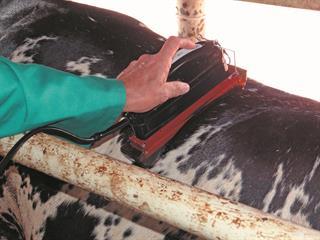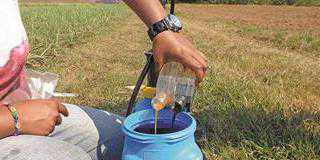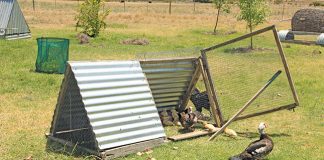
Ultrasound scanning is a medical imaging technique that uses high-frequency soundwaves and their echoes to display a two-dimensional figure on a monitor.
Ultrasonic soundwaves are generated and received by the transducer probe, which emits soundwaves through the soft tissue of the animal’s body. The frequency used is determined by the density of the tissue (fat, muscle or bone).
These sound waves ‘bounce’ off the boundaries between tissues, for example, between fluid and soft tissue or soft tissue and bone, and are reflected back to the probe. The information is then interpreted by the machine’s central processing unit, and an image is generated and displayed.
Technique
The probe generates a frequency of 3,5MHz for carcass evaluation. Fat depth is depicted in millimetres, eye muscle area in square centimetres, and intramuscular fat or marbling as a percentage of fat within the muscle.
Specific areas on the live animal’s body are identified as scanning areas. Vegetable oil is applied to the animal’s skin prior to scanning to ensure positive contact between probe and skin, and so improve image quality.
- Rib fat measurements: Subcutaneous or rib fat is measured in millimetres between the 12th and 13th rib. Rump fat (P8 fat), an indication of external fat, is obtained by measuring the distance, in millimetres, between the hooks and pins along the rump of the animal.
- Eye muscle measurements: The eye muscle area is measured in square centimetres between the 12th and 13th rib by determining the perimeter of the onscreen cross-sectional image. The eye muscle area is an indication of muscle and lean product in the animal. Intramuscular fat in the eye muscle is determined by specific software developed for the machine. The intramuscular fat percentage is an objective measurement of marbling in live cattle. Thus, PIMF (percentage of intramuscular fat) gives a good indication of the animal’s meat quality (Perkins, 2003).
Optimal scanning age
As an animal will normally deposit subcutaneous fat before intramuscular fat, a subcutaneous fat depth of at least 5mm is required before ultrasound scanning. Thus, young bulls and heifers in good condition should be between 300 and 800 days old when scanned to ensure that there is enough fat deposit for accuracy and variation between animals within the same contemporary group.
It is also important to follow normal guidelines for contemporary groups for ultrasound scanning; this will guarantee maximum accuracy, especially for breeding values generated from collected data. Animals of the same contemporary group are scanned and compared to determine the ranking of genetically superior animals.
These contemporary groups are normally animals of the same sex, born on the same farm during the same season, and have received the same treatment since birth.
Benefits
One of the major benefits of ultrasound scanning is that carcass data can be collected without slaughtering the animal, and the animal’s potential breeding value can be identified at a relatively young age. It is also a considerably cheaper method of collecting data on a large number of animals. According to research, carcass traits are heritable. By measuring carcass traits without slaughtering the animal, ultrasound scanning allows for the genetic improvement of carcass traits by indicating those animals with impressive carcass traits. These can then be used for breeding.
- Selecting for lean muscle: The eye muscle area is an indication of beef yield and is a highly heritable trait. Thus, relatively accurate genetic predictions can be done by using best linear unbiased prediction (BLUP) technology, which allows for the selection of breeding animals with more lean muscle on the carcass.
- Selecting for marbling: In countries such as the US and Australia, marbling plays an important role in meat classification systems. While marbling does not currently form part of South Africa’s red meat classification system, increased marbling does improve the flavour and succulence of the meat.Research has revealed that the correlation between fat depth and marbling is relatively low. This means that animals can be selected and bred for marbling, without the increase of subcutaneous fat depth, which has a negative effect on meat grading. The ultrasound scanning technique allows for the identification of animals with limited subcutaneous fat.
Free scanning service
The Agricultural Research Council (ARC) has offered ultrasound services for more than a decade. These form part of the field services of the National Beef Scheme. The service is provided free of charge at any of the ARC’s central bull testing facilities, as well as on farm during phase D testing of bulls for tests managed by ARC officials.
Six ultrasound machines are currently available; these are operated by eight ARC-accredited technicians in most of South Africa’s provinces.
- Contact the regional personnel listed in the box below for enquiries about ultrasound scanning services and the interpretation of carcass data or breeding values.
- Frans Jordaan is a chief technician with the National Beef Scheme of the ARC-Animal Production Institute in Irene. Call him on 012 672 9085, or email him at [email protected].













